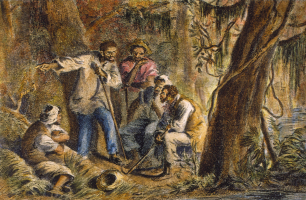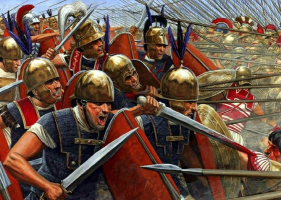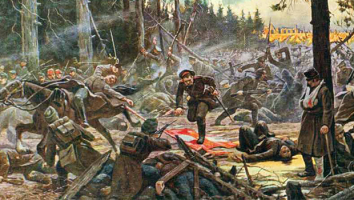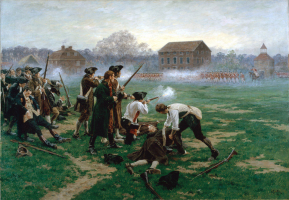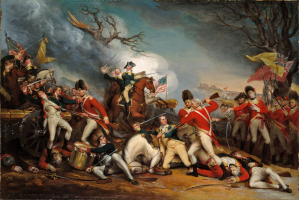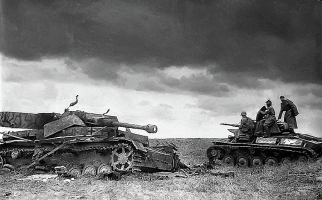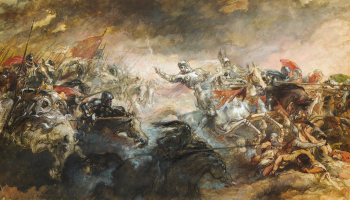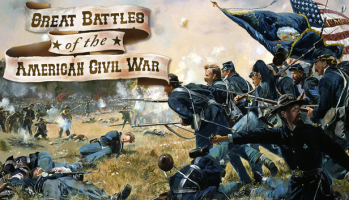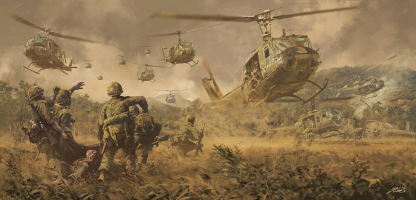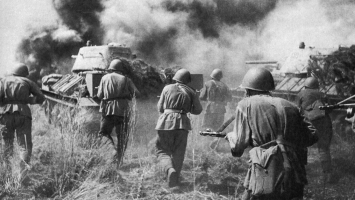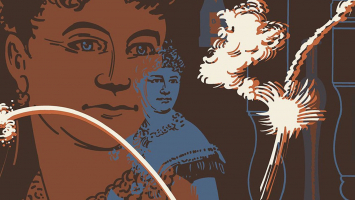Top 13 Rome’s Greatest Battles
The adage "Rome wasn't built in a day" couldn't be more accurate. Even though Rome is renowned for its opulent and decadent lifestyle, several battles were ... read more...fought along the road to preserve the republic and the empire's existence. Wars frequently result in leadership changes ship, which in turn facilitated the growth of Roman history and culture across the Roman empire. Let's read about the 13 Rome's greatest battles that impacted Roman history.
-
The three Roman legions were destroyed by the Germanic tribes as a result of the war. Arminius led the Germanic tribes in the conflict, while Publius Quinctilius Varus oversaw the Roman forces. In the Teutoburg Forest, the Roman army decided to advance. However, they found it difficult to go over a muddy and constrained path when they approached the forest. They soon came under attack from Arminius' troops.
The majority of Roman soldiers were novice fighters and camp followers. The invaders were then attacked with spears by Germanic tribes. Even though the Romans were spared that evening, they were unable to leave the woodland. Trench and clay fortifications blocked their march in all directions. Roman intruders attempted to breach the wall but were quickly overpowered by the tribesmen. Around 20,000 Romans were killed by Germanic tribes, and the survivors were sold into slavery. One of the two Roman war disasters in history, along with the fight of Cannae, was the Battle of the Teutoburg Forest.
Date: September 9 AD
Location: Osnabrück County, Lower Saxony
Combatants: Germanic tribes against Roman Empire
Result: Germanic victory and Roman Empire's withdrawal from Germany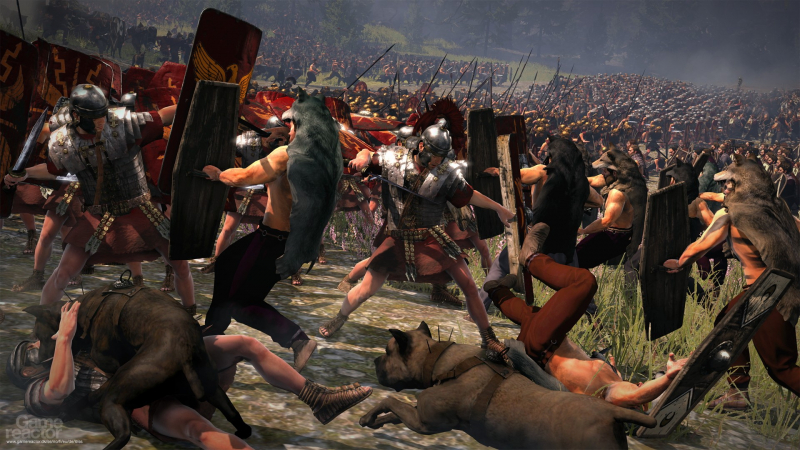
www.gamereactor.eu Historia Civilis - youtube.com -
The final naval conflict and war of the Roman Republic was the Battle of Actium. After Julius Caesar died in 44 BC, it took the conflict ten years to reach its peak. To find and eliminate Caesar's assassins, Octavian, Antony, and Lepidus established the ensuing alliance. Their mission had been accomplished at the Battle of Philippi in 42 BC. Lepidus was sent into exile in 36 BC when political unrest increased. Additionally, a new civil war sprang out in 32 BC. Finally, Antony and Cleopatra were positioned in Greece at the beginning of 31 BC, where Octavian defeated them.
Agrippa, Octavian's naval commander, cut off Antony and Cleopatra's main supply line on the sea route. As a result, Antony's army was forced to join Octavian. To get over the blockade, Antony sailed into the Bay of Actium on the western coast of Greece. Agrippa and Gaius Sosius, however, quickly pursued and conquered Antony and Cleopatra at Alexandria. As a result of their setback, Antony and Cleopatra killed themselves.
Date: 2 September 31 BC
Location: the Ionian Sea, near the promontory of Actium in Greece
Combatants: Romans supporting Octavian against Romans supporting Antony and Ptolemaic Egypt
Result: Victory for Octavian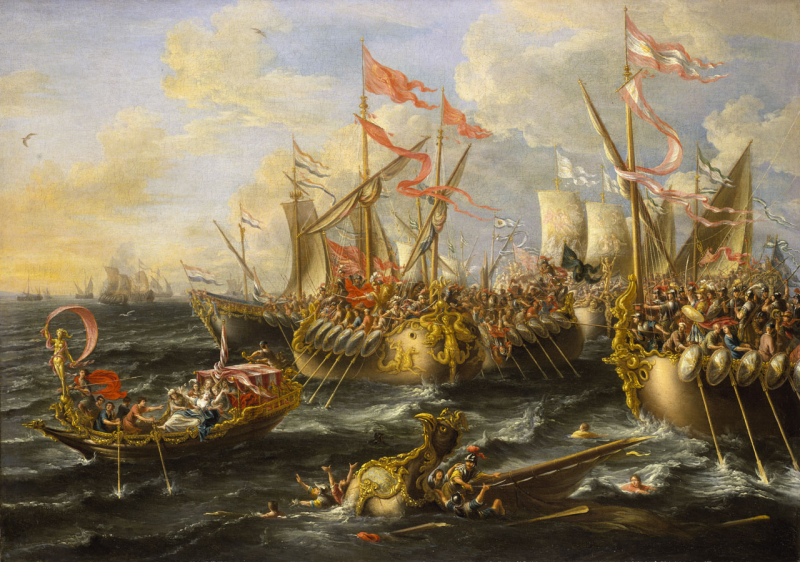
en.wikipedia.org Kings and Generals - youtube.com -
Julius Caesar deserves at least one item on any list of Rome’s Greatest Battles. The armies of Gaius Julius Caesar and Pompeii engaged in combat at the battle of Pharsalus. The Roman Republic came to an end as a result of this conflict, and the Roman Empire was established. Gnaeus Pompeius Magnus served as the Roman Republic's first leader. With the backing of the senators, Pompeii was able to field more armies than the seasoned Caesarian legions. Caesar, however, engaged in battle with the Pompeian forces and ultimately defeated them despite being outnumbered. One of the most renowned triumphs was the one that the Romans achieved thanks to Caesar's valor.
The Senate compelled him to hand over his troops. Instead, when Caesar invaded Rome in 49 BC, the Senate supporters led by Caesar's longtime ally Pompey escaped to Greece. After a year of maneuvering and counter maneuvering on Caesar's part, the conflict was finally resolved in a mountainous location to the northeast of the city of Pharsalus. Compared to Caesar's 22,000 soldiers, Pompey had 45,000 soldiers, many of whom had fought alongside Caesar.
Caesar's ploy was getting Pompey's cavalry to ride around his right flank while he held back a line of troops with pikes. The very cavalry that was meant to flank them was able to be attacked from the flank by them. Due to the collapse of Pompey's army that followed, Caesar's forces reputedly won the battle in roughly an hour. This left a line of Pompey's archers exposed to attack by Caesar's men. The next morning, the beleaguered survivors submitted without a struggle when Caesar sent several legions between the routed forces and their water supply. Pompey's army was estimated to have suffered roughly 15,000 losses whereas Caesar's force suffered just 300. Although Pompey would finally be killed by the Egyptian Empire, he would never again command an army against the new emperor of Rome. There would be further conflicts in the civil war.
Date: 9 August 48 BC
Location: Palaepharsalus, Greece
Combatants: Caesarians against Pompeians
Result: Caesarian victory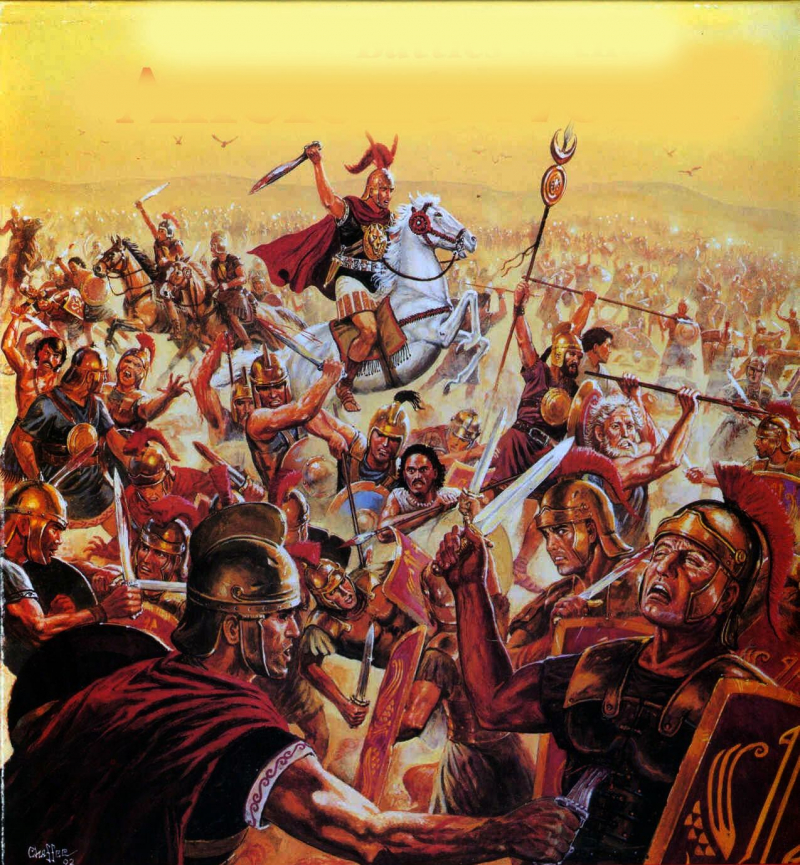
www.pinterest.com Kings and Generals - youtube.com -
The Siege of Alesia is another name for the Battle of Alesia. It is regarded as one of Caesar's most noteworthy military accomplishments. Julius Caesar commanded the Romans while Vercingetorix of the Arverni led the Gallic tribes in the conflict, which was fought between the Romans and the Gallic tribes. Gauls had constructed a mountaintop castle that Caesar couldn't storm as a kind of self-defense. The fortification, however, was unable to deter Caesar from assaulting the Gauls.
Caesar's next strategy was to encircle and starve the adversaries. The Gauls struggled to escape as they started attacking them. By using this tactic, over 250 000 Gauls were killed and 40.000 were captured. Roman forces also conquered the region, and the triumph was commemorated by 20 days of thanksgiving.
Date: September 52 BC
Location: Alise-Sainte-Reine, France
Combatants: the Roman Republic against the Gallic confederation
Result: Roman victory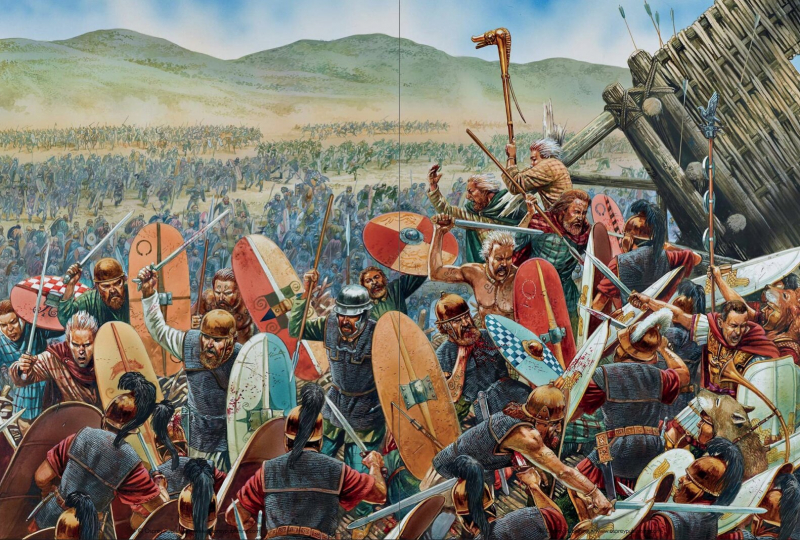
weaponsandwarfare.com Historia Civilis - youtube.com -
One of the most embarrassing defeats in Roman history occurred in the Battle of Carrhae. It was the outcome of the Roman invasion of Parthia, and it resulted in the deaths of 20,000 Romans and the captivity of 10,000. The invasion of Crassus into Parthia without authorization led to the conflict. In Rome, Crassus, a member of the First Triumvirate, was the richest man. He decided to attack Parthia without the Senate's formal approval. In line with his plan, Crassus sent 35,000 heavy soldiers, 4,000 light infantry, and 4,000 cavalries into Syria in 55 BC. The Armenian king Artavasdes gave him an extra 6,000 cavalry.
He was urged by Artavasdes to travel via Armenia and to stay away from the desert. Crassus, however, disregarded the advice and the promise to assist with additional warriors. Near the village of Carrhae, he came upon Surena's army while leading his Roman army through the Mesopotamian deserts. Then, Crassus gave his men tactical instructions, but they were unsuccessful.
Surena assaulted Crassus from the opposite direction, sending forth horse archers to damage the Crassus army. In response, Crassus dispatched his son Publius to defend, but he killed himself before being taken prisoner by the adversaries. Surena delivered a letter to Crassus to bargain, ensuring Publius' death and the significant loss of Romans. Crassus' Roman troops forced him to see Surena even though he didn't want to. Crassus and his generals were slain during the violent confrontation that resulted from the discussion.Date: 6 May 53 BC or 9 June 53 BC
Location: Near Carrhae (Harran), Upper Mesopotamia
Combatants: the Roman Republic against Parthian Empire
Result: Parthian victory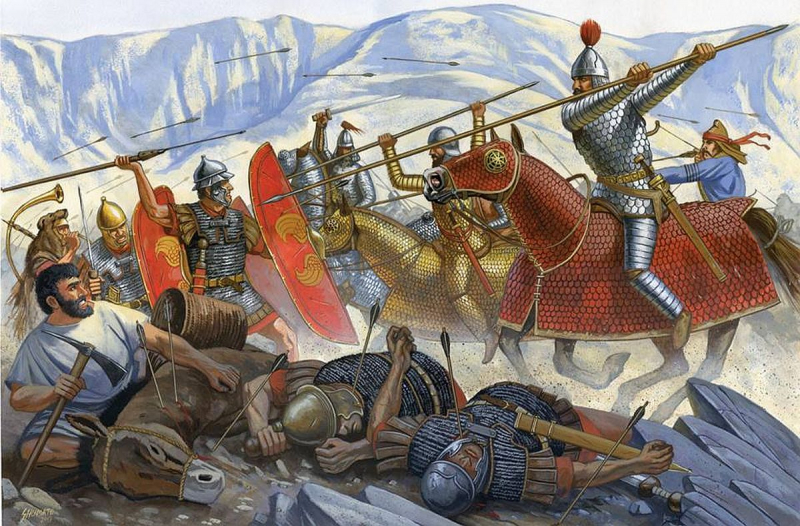
imperiumromanum.pl Kings and Generals - youtube.com -
The Raudine Plain Battle is another name for the Battle of Vercellae. The Romans and the Germanic-Celtic battled in this conflict. Gaius Marius, the consul, oversaw the Romans, while Boiorix, the Cimbric king, commanded the Germanic-Celtic Cimbri. The Roman Army was supposed to be positioned in the Alps to block the Germans from entering Italy, Gauis Marius had to work with Consul Lutatius Catulus. When Catulus and Marius engaged the Germans in combat, their numbers were still about 55,000 versus a conservatively larger adversary of over 180,000. First, the Cimbric assaulted Northern Italy, where they were beaten by 20,000 soldiers under Consul Lutatius Catulus, the consul. After defeating the Teutons at Aquae Sextiae, Marius led 32,000 men on a march to aid Catulus.
The Romans launched a surprise assault against the Germans by positioning their forces in the mist. The Germans launched a cavalry counterattack to flank the Romans on the left. In response, Gaius Marius attacked the space on the German right where the cavalry and infantry separated, enabling the Romans to cut off the flanking force and strike the German infantry in a weak position. The German women performed better than the Aquae Sexitae ladies by taking up weapons and putting up a valiant battle until many of them were captured and sold into slavery. With a loss of between 65,000 and 160,000 troops and the capture of 60,000, the Cimbri was annihilated. The Romans' triumph in this conflict laid the groundwork for the Roman Republic's eventual transformation into the Roman Empire.Date: 30 July 101 BC
Location: Vercelli in Cisalpine Gaul, Northern Italy
Combatants: the Roman Republic against Cimbri
Result: Roman victory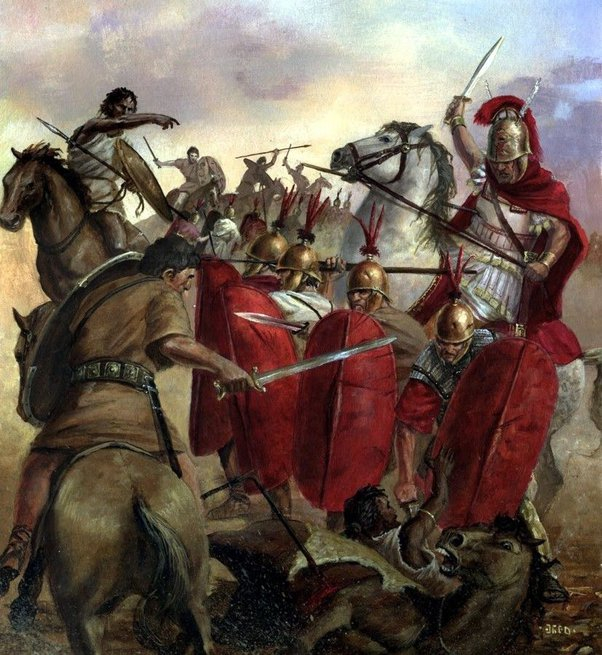
www.quora.com PopeJohnPaul - youtube.com -
The allied Germanic tribes were migrating towards the end of the second century BC, and thousands under King Jugurtha had determined Italy would be their new home. The German forces proved to be far more powerful than the newly-emerging Roman Empire had anticipated during what is known as the Battle of Aquae Sextiae. At the Battle of Norcia in 112 BC, they completely routed a Roman army. They then followed this up in 105 BC with an even bigger victory at Arausio, when they annihilated tens of thousands of Roman soldiers. The army of Consul Gauis Marius was tasked with stopping the worst threat to Rome in more than 150 years. Romans led by commander Gaius Marius defeated the Teutones and Ambrones when they attempted to block the Alps' path into Italy.
He initially confronted them in a river valley in Northern Italy by stationing his troops there to disrupt a German supply line that they would use to migrate south. Marius had his army take up a strong position on a hill, build entrenchments, and gather supplies for a siege while the enemy arrayed themselves, despite being outnumbered by 140,000 previously extremely effective Germans to 40,000 soldiers. Marius encouraged the Teutones to strike. The 4,000-strong covert Roman force defeated the Teutones' force when they attacked. They launched a surprise rear attack on the Teutonic force. As a result, the opposing forces lost their way and were routed. Teutones and Ambrones were exterminated by the Romans, who killed 200,000 people including their king Teutobod and captured 90,000. Children and women who were sold as slaves were among the lives that were captured. Those who lived on became the Third Servile War's rebel gladiators. A war against the Cimbri was fought and won by Marius and proconsul Quintus Lutatius Catulus a year later.Date: 102 BC
Location: Modern Aix-en-Provence, France
Combatants: the Roman Republic against Teutones and Ambrones
Result: Roman victory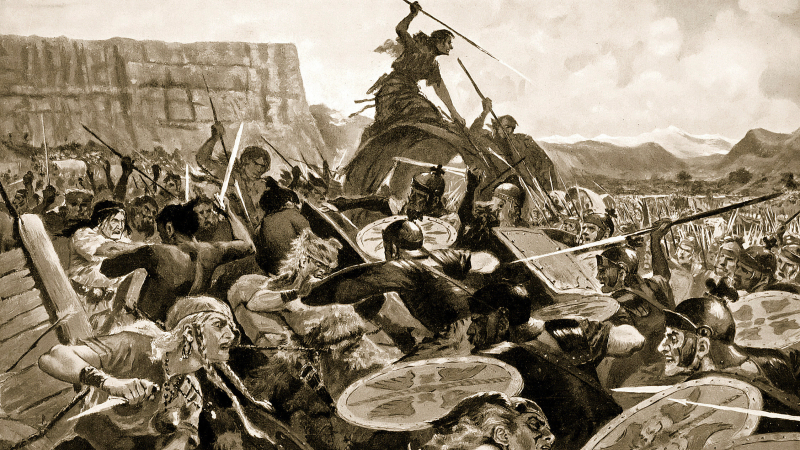
en.wikipedia.org Ancient History Guy - youtube.com -
The Romans under Scipio Africanus the Elder defeated the Carthaginians under Hannibal in the Battle of Zama (202 BCE). The Second Punic War's final and most important battle ultimately put an end to both Hannibal's leadership of the Carthaginian army and Carthage's hopes of mounting a meaningful resistance to Rome. To lure Hannibal from Italy and lure him to a place where the two most renowned generals of their periods could square off, Scipio Africanus had to march on the city of Carthage proper and attack modern-day Tunis.
Hannibal gave the command for his elephants to charge first, which started the fight. The Carthaginian cavalry formations were mostly run through by the elephants when the Romans startled them with an exceptionally loud horn burst. The infantry battle between the Romans and Carthaginians dragged on until Hannibal sent in his Italian veterans, who started to break the Roman line before the cavalry came back. Unfortunately for Hannibal, when the mounted forces finally arrived, they let themselves be surrounded. It was not surprising that this was the final occasion that elephants faced off against Roman soldiers in the battle for a very long time given how brilliantly they had performed in both this fight and Beneventum.Date: 19 October 202 BC
Location: Zama, Carthage (near today's Siliana, Tunisia)
Combatants: Roman Republic and Kingdom of Numidia against Carthage
Result: Roman victory and End of the Second Punic War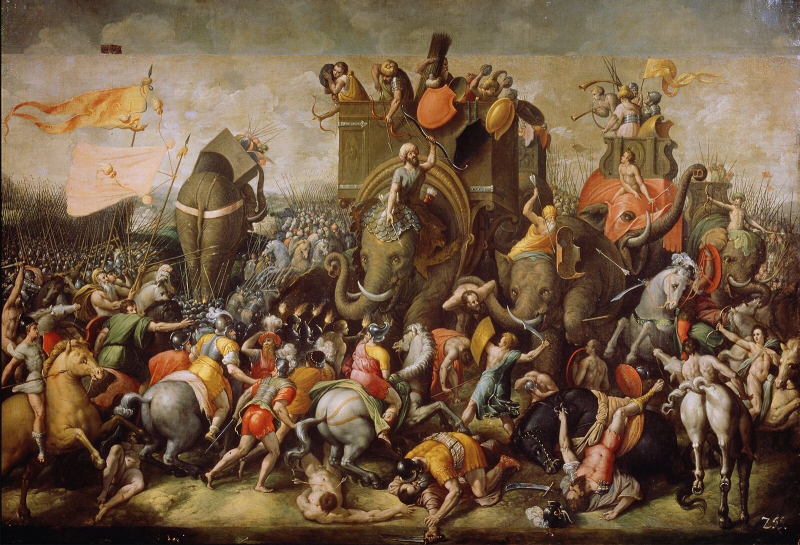
www.britannica.com Historia Civilis - youtube.com -
The Second Punic War in 206 BC was said to have seen Scipio Africanus achieve his most stunning victory at the battle of Ilipa. Scipio used his plan to overcome two adversaries from Carthage, Mago Barca, and Hasdrubal Gisco. Scipio foresaw the invasion that Mago and Gisco were planning, so he sheltered his forces behind the hill and drove the enemy back. He was able to assault the Carthaginians at dawn thanks to the successful execution of his plan.
The two armies, which were around 55,000 to 45,000 in favor of the Carthaginians, were sufficiently evenly matched that neither side rushed into battle, instead opting to start with minor skirmishes. The two armies deployed their forces in the same ways on the first two days, but on the third day, Scipio got the bright idea to completely alter his troop formations, primarily to favor his army's flanks. He then launched an early assault to engage the Carthaginians in combat before Hardusal could observe how the Romans had deployed their forces. The Carthaginians finally disintegrated after failing to push their counterattack. According to some accounts, the Iberian Peninsula was lost and their defeated army suffered over 49,000 losses compared to Rome's 7,000.Date: Spring 206 BC
Location: East of Ilipa or modern Seville, Spain)
Combatants: the Roman Republic against Carthage
Result: Roman victory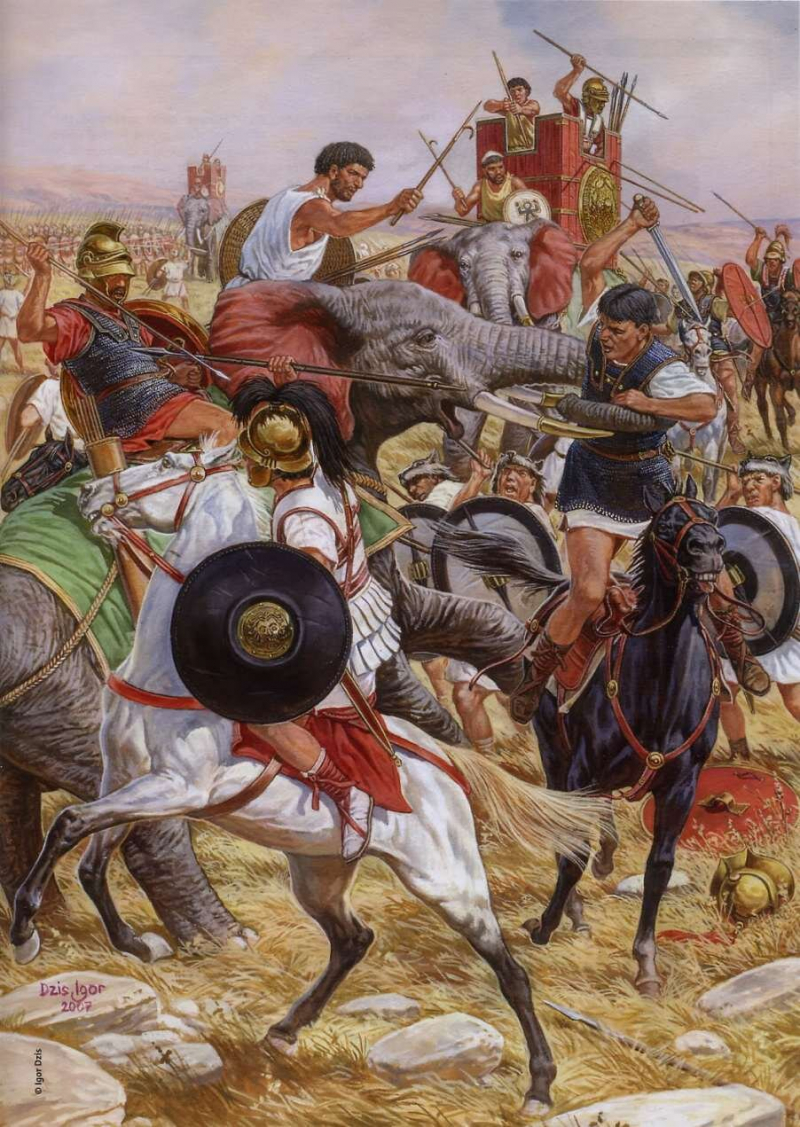
thelosttreasurechest.wordpress.com Flash Point History - youtube.com -
During the Second Punic War, the Romans suffered one of their worst defeats ever in the Battle of Cannae. Hannibal commanded the Carthaginians and their allies in the conflict, while Lucius Aemilius Paullus and Gaius Terentius Varro led the Romans. Even though they had already suffered significant casualties in the Battle of Trebia and the Battle of Lake Trasimene, the Romans chose to go up against Hannibal at Cannae.
The Romans had 86,000 men on the battlefield, while Hannibal had 40,000 infantry and 10,000 cavalries. To start the battle, the Roman allies gathered their strong infantry. The Aufidus River, the main supply of water, had already been blocked by Hannibal, forcing the Romans to face south. The Romans were able to temporarily push back the hostile army, nevertheless. Despite the Romans' strategy, they were unable to escape Hannibal's twofold envelopment strategy that surrounded them. Due to Hannibal's tactics, the Romans were decisively defeated and over 700,000 warriors were slaughtered.Date: 2 August 216 BC
Location: Cannae, Italy
Combatants: the Roman Republic and Carthage
Result: Carthaginian victory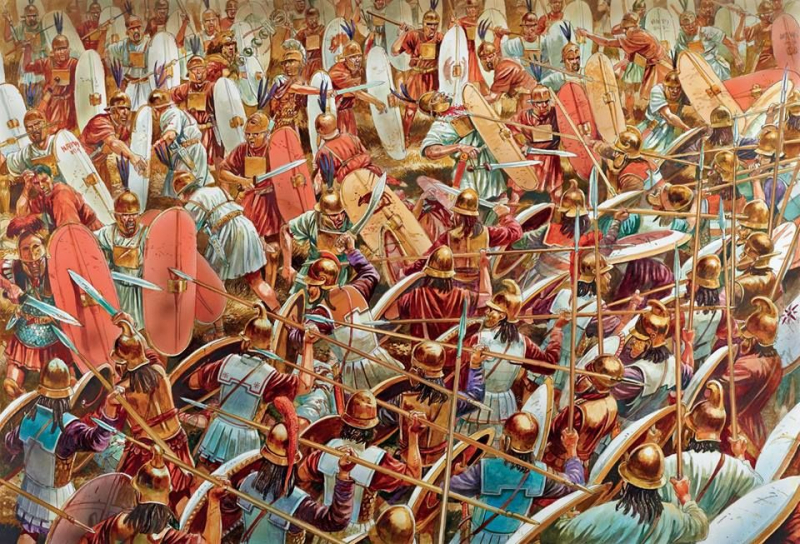
en.wikipedia.org Historia Civilis - youtube.com -
During the Pyrrhic War between Rome and Epirus, the battle of Beneventum served as its conclusion. Pyrrhus, king of Epirus, led Epirus while Manius Curius Dentatus, a Roman consul, commanded the Roman army. In the most recent battles in Sicily and earlier conflicts with the Romans, Pyrrhus sustained significant losses. In addition, when Greek city-states urged Pyrrhus to aid them in their fight against the Carthaginians, his force was smaller than the Romans'. He traveled to Sicily, conquered every Carthaginian territory except Lilybaeum, and then left for Italy.
Then he decided to split his army into two halves, sending one after Cornelius Lentulus and the other toward Manius Curius. Additionally, he sent out his combat elephants, but the Romans chased them away. After a protracted fight, Pyrrhus was finally compelled by the Romans to abandon his campaign in Italy and head back to Epirus.Date: 275 BC
Location: Beneventum (modern Benevento), Italy
Combatants: the Roman Republic against Epirus
Result: Roman victory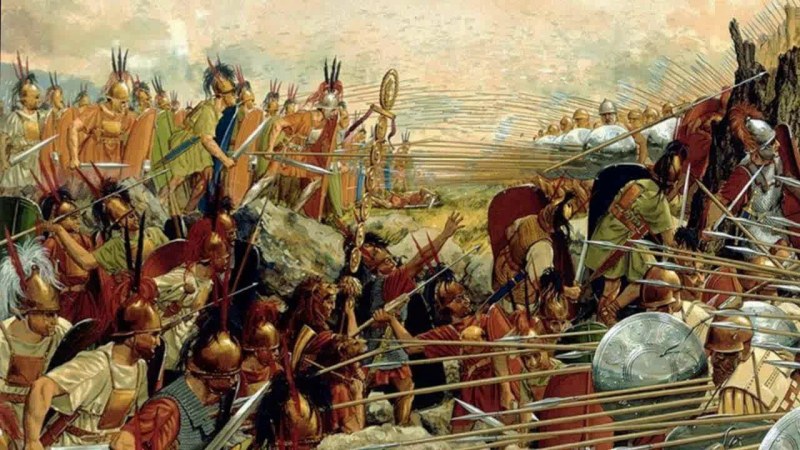
www.pinterest.com Wolf Of Iberia - youtube.com -
The Greeks and Romans fought at the Battle of Heraclea. The Epirus king Pyrrhus commanded the Greeks, while the Romans were headed by consul Publius Valerius Laevinus. Greeks marched from Heraclea, Tarentum, Thurii, Epirus, and Metapontum. Magna Graecia, of which the Tarentum was a part, had two main factions: one opposed the Romans and the other supported them. Tarentines asked Pyrrhus for assistance when Romans approached Tarentum. He decided to aid Tarentines as he awaited reinforcements for his pals.
He intended to fight Romans on a plain near the river Siris between Heraclea and Pandosia if reinforcements didn't show up. He was not, however, aware of the size of the Roman army. Because the Romans had around 100,000 more soldiers than the Greeks, Pyrrhus was alarmed and lost all hope of winning the conflict. He managed to spread false information about his demise, which caused the Romans to rejoice. He capitalized on the opportunity and assaulted Rome with his war elephants, giving the Greeks the win. The Romans suffered 15000 casualties, compared to only 11000 for the Greeks.Date: July 280 BC
Location: Heraclea, Basilicata, southern Italy
Combatants: Greeks against the Roman Republic
Result: Greek victory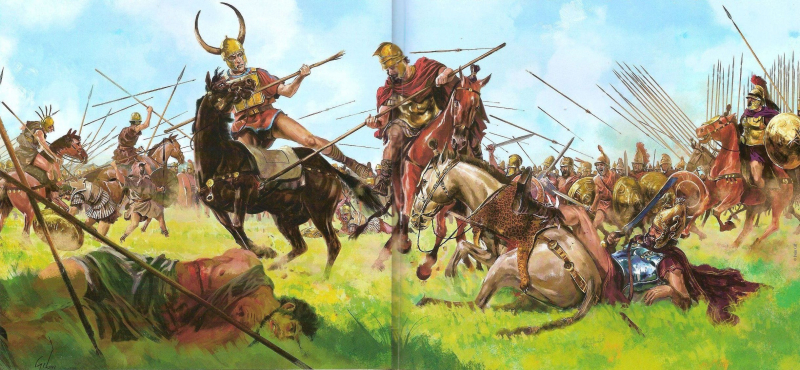
www.pinterest.com Kings and Generals - youtube.com -
One of Tarquin's efforts to retake the throne was the Battle of Silva Arsia. The dispute between the Etruscan towns and the Roman state was another interpretation of the incident. The Roman Republic, which came to be ruled by the consuls and other elected officials, took the place of the Roman Monarchy in 509 BC. But King Lucius Tarquinius Superbus yearned to return and take control of the metropolis once more. The Etruscan towns of Tarquinii and Veii backed him.
When King and Tarquin met Publius Valerius and Lucius Junius Brutus, the Roman consuls, the outcome was not what they had hoped for. As a result, at the start of the conflict, Arun Tarquinius was assigned to the cavalry. Over several days, Arun and Brutus murdered one another in combat. And by employing their right wing, the army of Tarquinii was able to expel the Romans from the area. The Romans, however, quickly caught up with the Tarquinii and overcame them. Since then, the Romans have been in power, resulting in a great deal of creativity and ingenuity.Date: 509 BC
Location: Near the Silva Arsia (a forest near Rome)
Combatants: the Roman Republic against Tarquinii and Veii
Result: Roman victory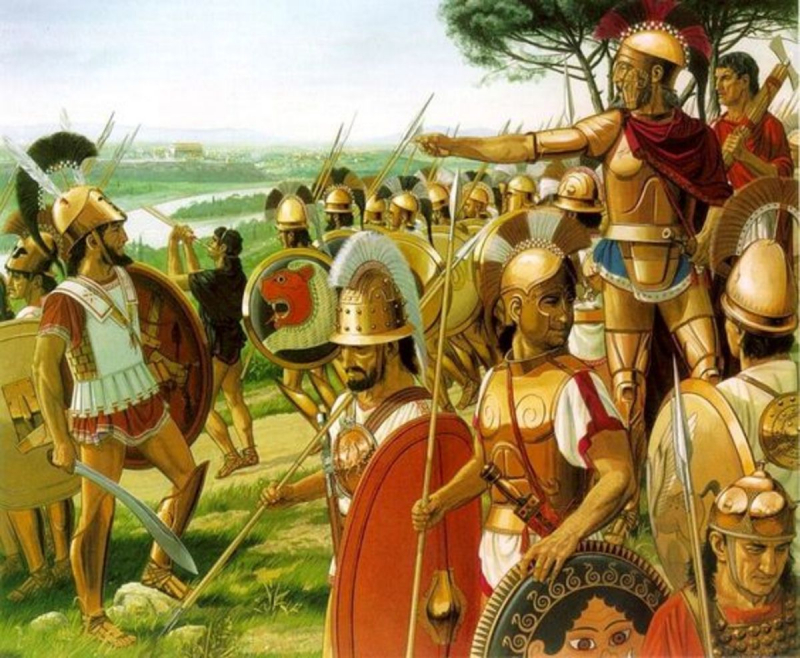
owlcation.com Windsor Teaches - youtube.com
















